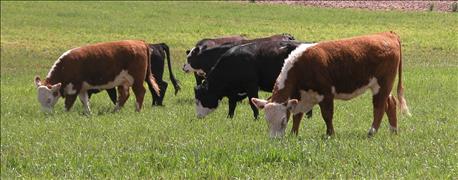
A new grazing trial with steers on wheat pasture showed comparable gains from feeding monensin to the first trials published 35 years ago.
Recent University of Arkansas research published this year evaluated the performance of growing steers grazing wheat pasture and fed free-choice mineral designed to supply a daily dose of monensin, or another gain enhancer, and compared them with a control treatment.
This trial compared 200 mg per day of Rumensin, from Elanco Animal Health, with 20 mg per day bambermycin, known as Gainpro, from Huvepharma, Inc., and a non-medicated mineral. It used 315 calves initially weighing 538 pounds.

The lastest research keeps showing about 0.2 pound of gain per day per steer from implants, when cattle are on good-quality pasture.
Monensin is labeled by FDA to increase weight gain in pasture cattle when fed at a level of 50 to 200 mg per head per day. In this study, overall average daily gain (ADG) was not different (P = 0.42) for steers fed the non-medicated mineral (2.73 lb/day) or bambermycin mineral (2.80 lb/day) but was significantly greater (P≤ 0.05) for steers fed the monensin mineral (3.02 lb/day).
Therefore, feeding monensin increased ADG by 0.29 pounds per day, or 10.6%, compared with feeding the non-medicated mineral.
Previous Arkansas research also measured the effect of feeding a monensin-containing mineral versus a non-medicated mineral in steers grazing wheat pasture. In that study, steers fed a monensin mineral gained 0.15 more pounds per day, or 5.9% faster, than steers fed a non-medicated mineral.
In a four-year trial published in 2007 Oklahoma State University researchers fed a monensin-containing mineral to steers grazing wheat pasture increased ADG (P < 0.01) by 0.22 pound, or 12.2%, compared with a non-medicated mineral.
In the original 24-trial pasture research summary that Elanco Animal Health used in getting
monensin approved by FDA in 1978, feeding monensin increased ADG (P ≤ 0.0001) by 0.20 lb or 16.3%, over control cattle, notes Britt Hicks, area extension livestock specialist for Oklahoma State University.
Hicks notes the added gain from monensin in these more recent studies, running from 0.15 to 0.29 pound per day, is nearly identical to that reported by Elanco nearly 40 years ago.
About the Author(s)
You May Also Like




